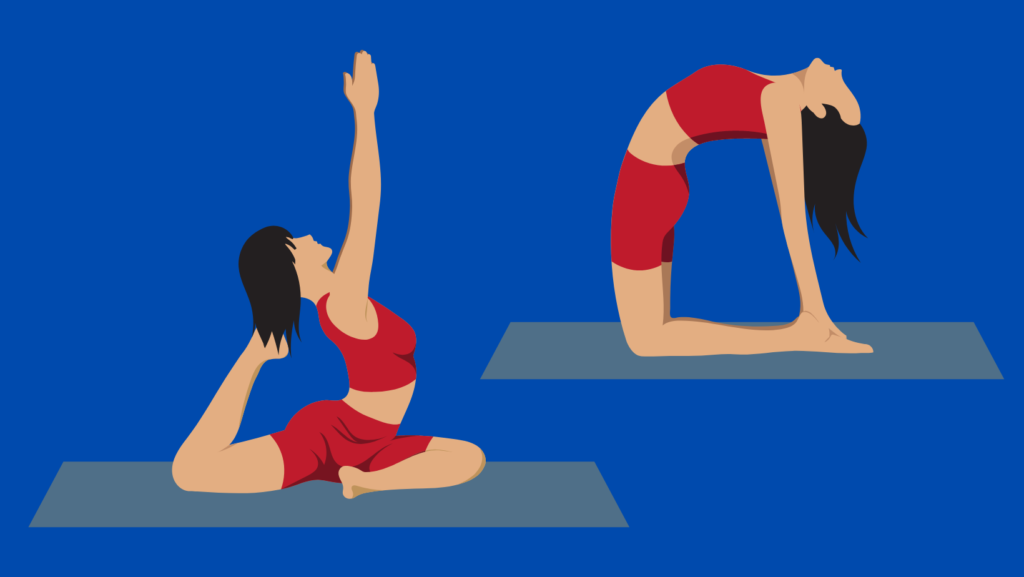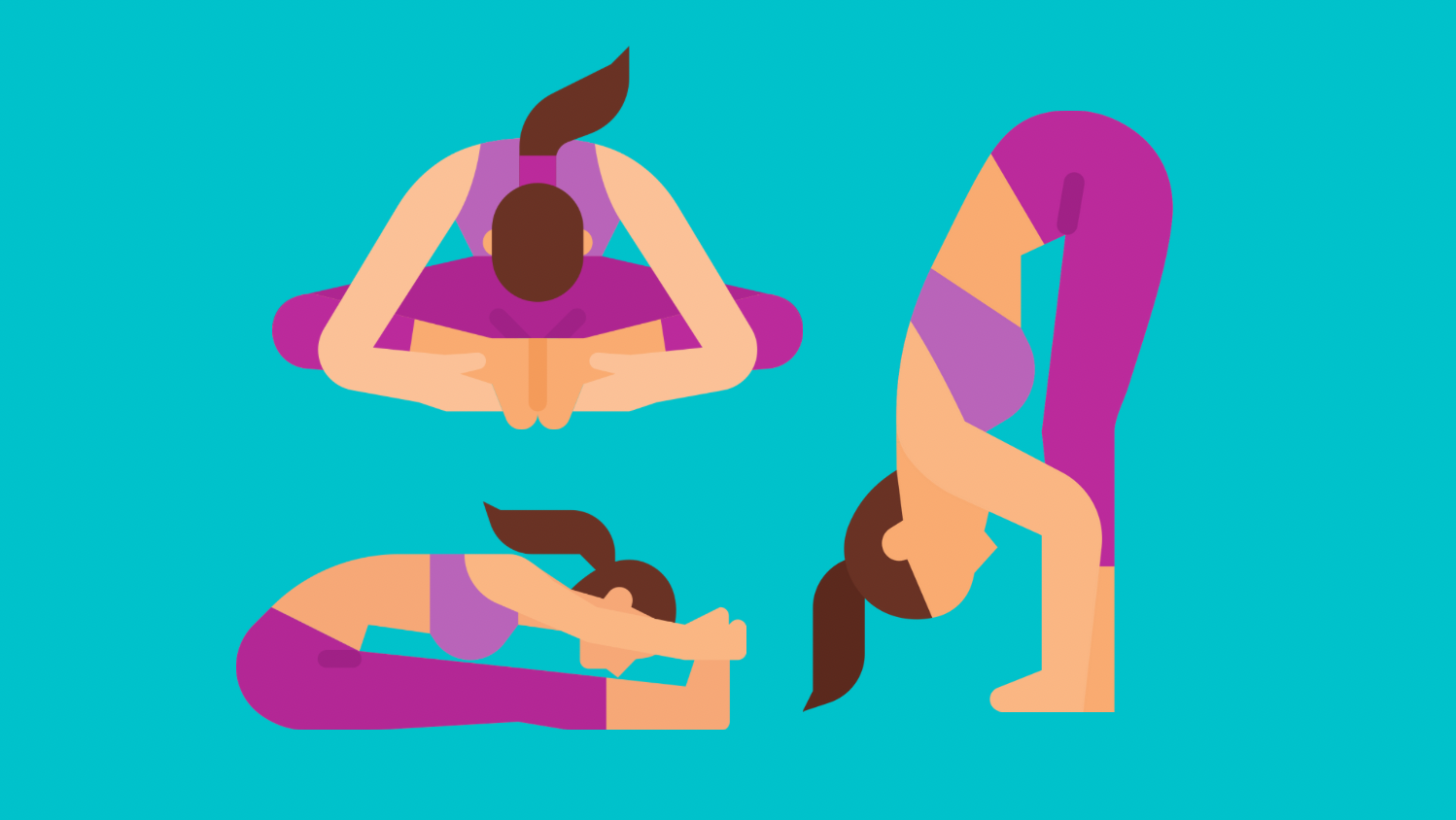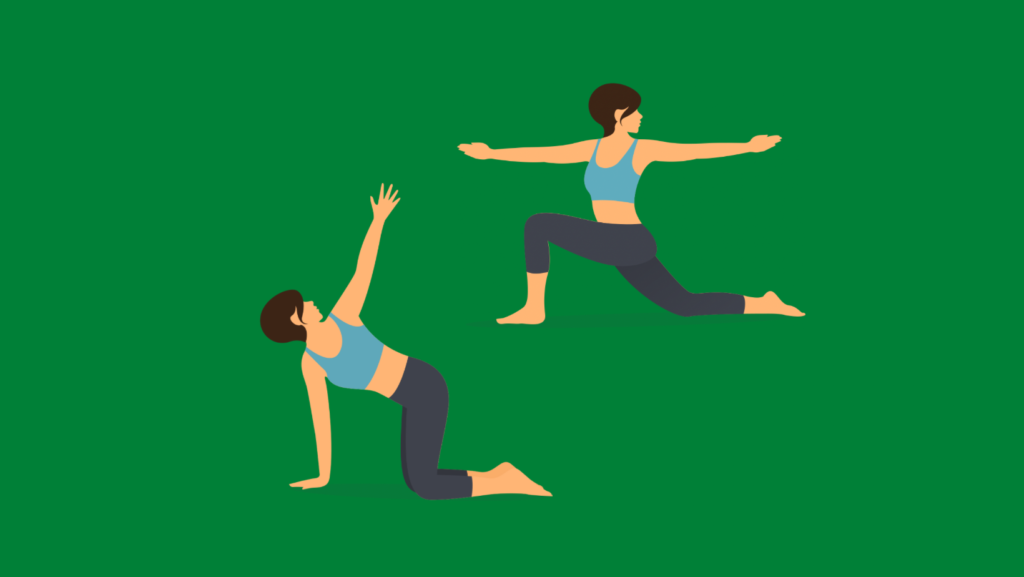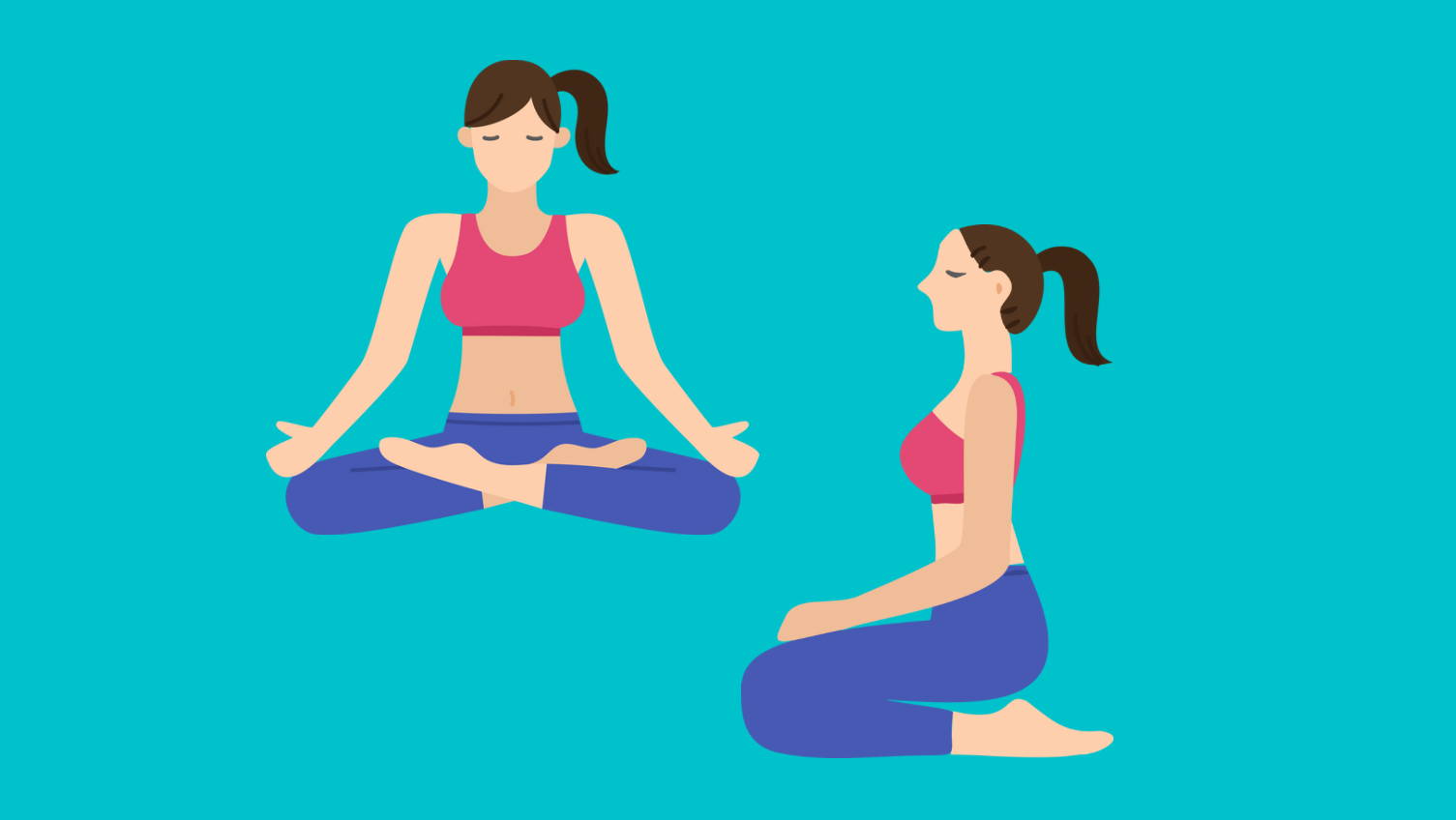Yoga is a vast topic. There are millions of asanas . And it’s hard to remember all of it and each and every asana have Sanskrit names. Here is the list of common yoga asanas and their basic meaning behind their names .
Before knowing the names of the asanas know some basic terms which will help you to understand the meaning of asana without any confusion.
- Supta – reclining or reclined
- Adho – downward
- Urdhva – upward
- Parsva – side
- Uthitha – raised or standing
- Hasta – hand
- Parivrtta – turn around or revolving
- Prasarita – spread
- Viparit – reverse
- Baddha – bound or binding.
- Kon – angle
- Mukha – face
- Purna – complete or completed.
- Ardha – half.
Most of the names of asana is based on animals, how it looks, names of Rishi’s etc.
List of Back bending asanas with their meaning.

- Bhujangasana
- Bhujang means cobra in Sanskrit. This Asana looks like the raised hood of a cobra.
- Shalabhasana
- Shalabh means locust. This asana looks like locust.
- Dhanurasana
- Dhanur means ‘bow’.
- Ushtrasana
- Ushtra means ‘camel’.
- Setu bandhasana
- Setu means ‘bridge’. Bandha meaning ‘lock or bind’.
- Chakrasana
- Chakra means ‘wheel or round’. This asanas also called Urdhva Dhanurasana.
- Kapotasana
- Kapota means ‘pigeon’.
- Bitilasana
- Bitil means ‘cow’.
- Matsyasana
- Matsya means ‘fish’.
- Urdhva mukha svanasana
- Urdhva means upward . Mukha means face. Svana means dog. So it’s upward facing dog pose.
- Chamatkarsana
- Chamatkar means ‘miracle’. This asana is a combination of back bending and twisting .
- Anjaneyasana
- Anjana is the name of lord hanuman’s mother. Maa Anjana was a great Yogini. This asana is named after her name . Anjaneyasana – the mother of lord hanuman.
- It’s a wonderful combination of leg stretching and back bending.
Forward bending asanas with their meaning

- Padahastasana
- Pada means ‘feet’. Hasta means ‘hands’. Touching the feet with the hands.
- This asana is similar to uttanasana, hastapadasana.
- Paschimottanasana
- Paschim is a direction means ‘west’. In asana it is referred as the back of the body. Uttana means extended or intense stretch.
- Janu sirshasana
- Janu means ‘knee’ in Sanskrit. Sirsh means ‘head’. Head to knee pose .
- Pavanmuktasana
- This asana is beneficial to cure the gases problems and poor digestion. This asana is known as wind realising pose.
- Balasana
- Bal means ‘child’. It is relaxing asana .
- Halasana
- Hal means ‘plough’.
- Kurmasana
- Kurma means ‘tortoise’.
- Yoganidrasana
- Nidra means ‘sleep’. Yoganidrasana is translated as yogic sleep pose.
- Naukasana.
- Nauka means ‘boat’.
- This asana is similar to navasana.
- Bhunamanasana
- Bhu means ‘earth’. Naman means praying .
- This asana is similar to Prasarita padottanasana – Prasarita means ‘spreaded’. Pad means legs. Uttana means intense stretch.
Spinal twisting asanas

- Matsyaendrasana
- A great Rishi of India Rishi matyendra, who taught this asana to the students of hatha yoga that’s why this asana named after his name.
- Markatasana
- Markata means ‘monkey’.
- Parivrtta utkatasana
- Parivrtta means ‘revolving’. Utkata means ‘powerful or fierce’.
- Parivrtta ardha chandrasana
- Ardha means ‘half’. Chandra means ‘moon’.
- Parivrtta trikonasana
- Trikona means ‘triangle’.
- Parivrtta sukhasana
- Sukhasana is a seated asana . Sukha means ‘pleasure’.
- Chamatkarasana
- Chamatkar means ‘miracle’. This asana is a combination of backbend and twisting.
Seated asana for meditation practices

- Sukhasana
- Sukha means ‘pleasure’. This asana is very comfortable for beginners to sit for meditation or pranayama practices. also called easy crossed leg asana.
- Siddhasana
- Siddha means ‘the one who is accomplished’ or mastered something.
- Sitting with the feet on top.
- Vajrasana
- Vajra means ‘diamond’.
- When practitioner practice this asana on regular basis he gain the firm and strong spine like a diamond.
- Padmasana
- Padma means ‘lotus’.
- This asana is little tough for the beginners .
- Don’t practice this asana if you have knee problems or knee injuries.
- Swastikasana
- Swastik is a sacred symbol in Hinduism .
- Swastika is make up of 3 words su+Asti+ka. Su means good. Asti means existence. Ka means to make.
- There is deep esoteric meaning behind this word in Hinduism.
As we all know there are millions of asanas. Don’t forget this the goal of asana is not only limited to physical health but it also works on your emotional, mental and spiritual health. The final Goal is union to that supreme divine power. Yoga asanas is one way to unite with that divine.
